Telltale Roots: Secrets From the Underground
As a newbie Master Gardener (class of 2020), I am constantly reminded of how much I don't know and how much more I need to learn. I also find myself looking at my garden in a very different way. I am noticing little holes and winding trails on leaves, weirdly shaped bugs, seedlings that disappear overnight, and soil that never seems to be wet no matter how much I water. Which takes me to the saga of…...NEMATODES!
As I am always anxious to get the first seeds in the soil, early this spring I planted the first of three plantings of pole beans (Kentucky Wonder) in one of my raised beds. I prepared the soil as I usually do with compost, chicken manure and worm castings. I noticed that I did not have as bountiful a crop of beans as I usually do but didn't think much of it. By the end of June, the beans were done so I pulled them out to make room for a second planting of zucchini. As I pulled them out, I stopped short and stared at the ugly deformed roots (and of course took pictures) that looked like this:
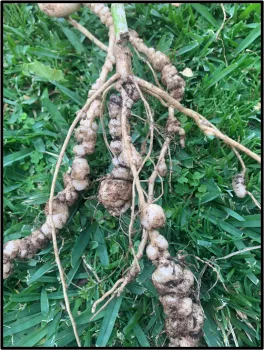
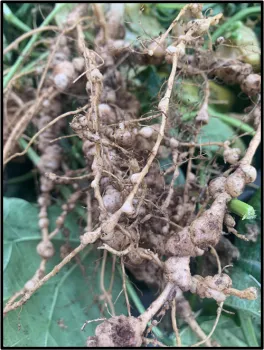
Back in the deepest recesses of my brain, I remembered something from the Master Gardener course about a “pest” that attacks the roots of plants. So I went back to my class notes, found some scribbles about nematodes and Googled ucanr nematodes. This took me to a very comprehensive 5-page article (Pest Notes) about these little microscopic eel-like roundworms that attack the roots of all sorts of plants. The most damaging ones to gardens are the root knot nematodes. Woefully, I had a prime example of the damage done by these little destructive buggers.
The swollen areas on the roots (called galls) interfere with the ability of the roots to absorb water and nutrients. As I explained to my 7-year-old granddaughter (Master Gardener in training), if something messes with the roots, it messes with the plant.
Oh, but there's more to this saga!
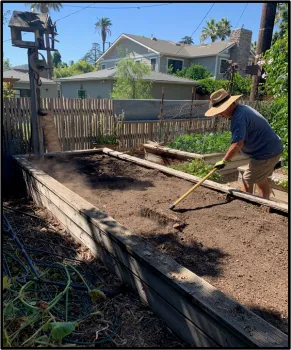
About a month later, I was pulling out my Bird Nest Gourds from a totally different raised bed and, lo and behold, the roots looked almost exactly like those of my beans! I learned that root knot nematodes are difficult to control, and can spread easily on garden tools, shoes and infested plants. I am sure I have spread them everywhere.
So it was time for action! I still had sweet potatoes and peppers growing in the bed where I pulled out the infested beans, so I have not attacked (pun intended) that bed yet. But the gourds were growing in a bed of their own, so after re-reading the UCANR Pest Notes on nematodes more carefully, I settled on solarization to try to destroy the nematodes in that location.
Solarization? There is a first time for everything. Googling ucanr solarization gave me all the information I needed to do this. Apparently covering the soil tightly with clear plastic in hot summer weather for 4-6 weeks can heat the top 12-18 inches of soil up to 140 degrees which can kill nematodes and their eggs. The article also sadly declares that this is only a temporary solution as these sneaky nematodes may move deeper into the soil to escape the heat and only the ones in the upper 12 inches may be killed.
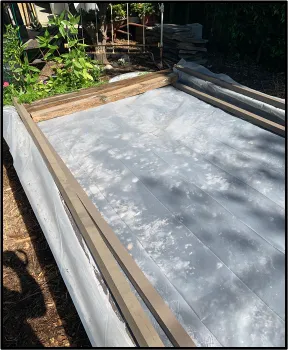
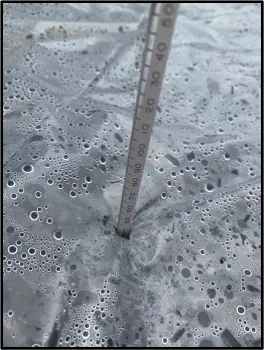
I will plant some brassicas in this bed after the 4-6 week “quarantine” period.
So now I wait…
Fingers crossed.

